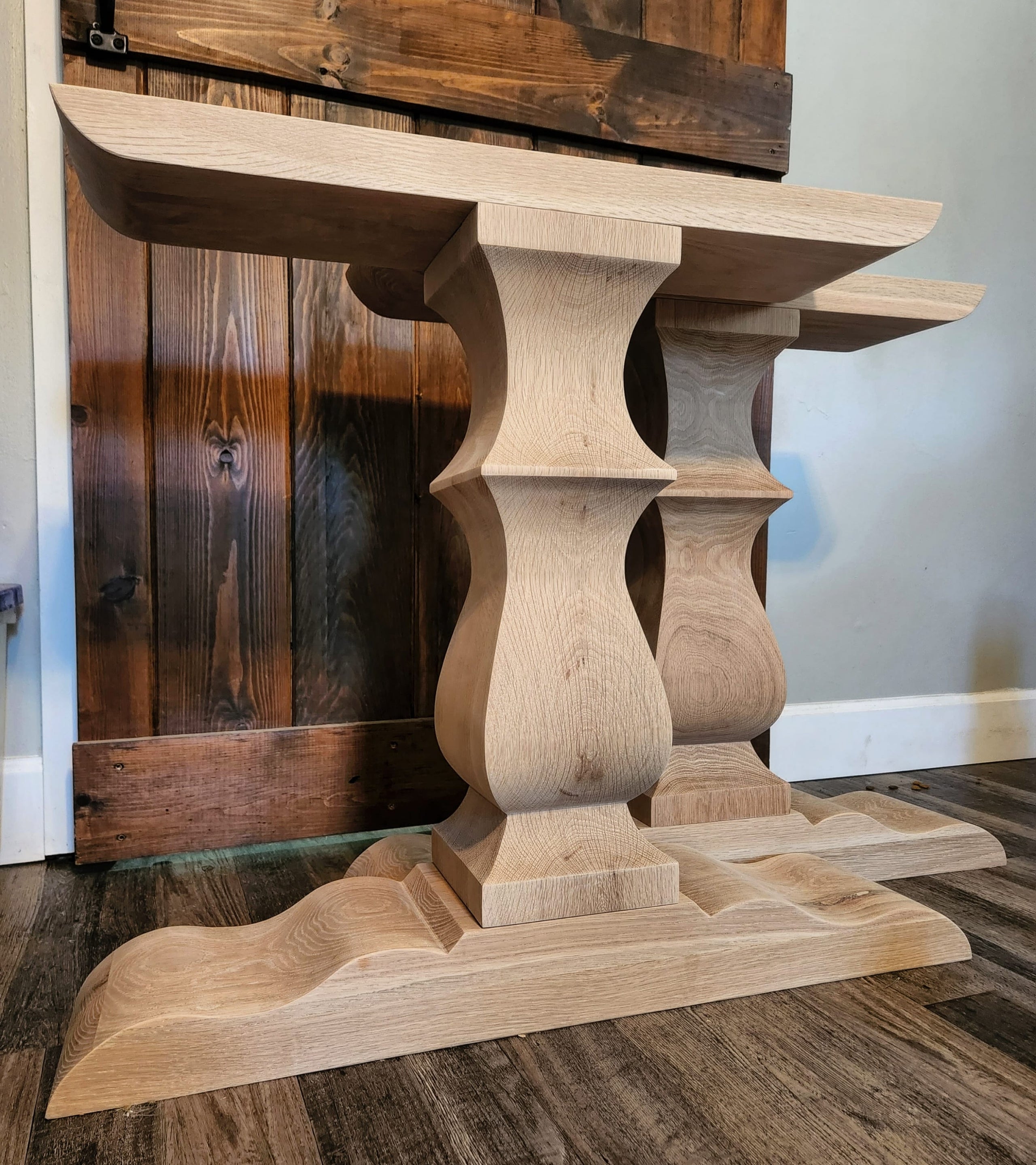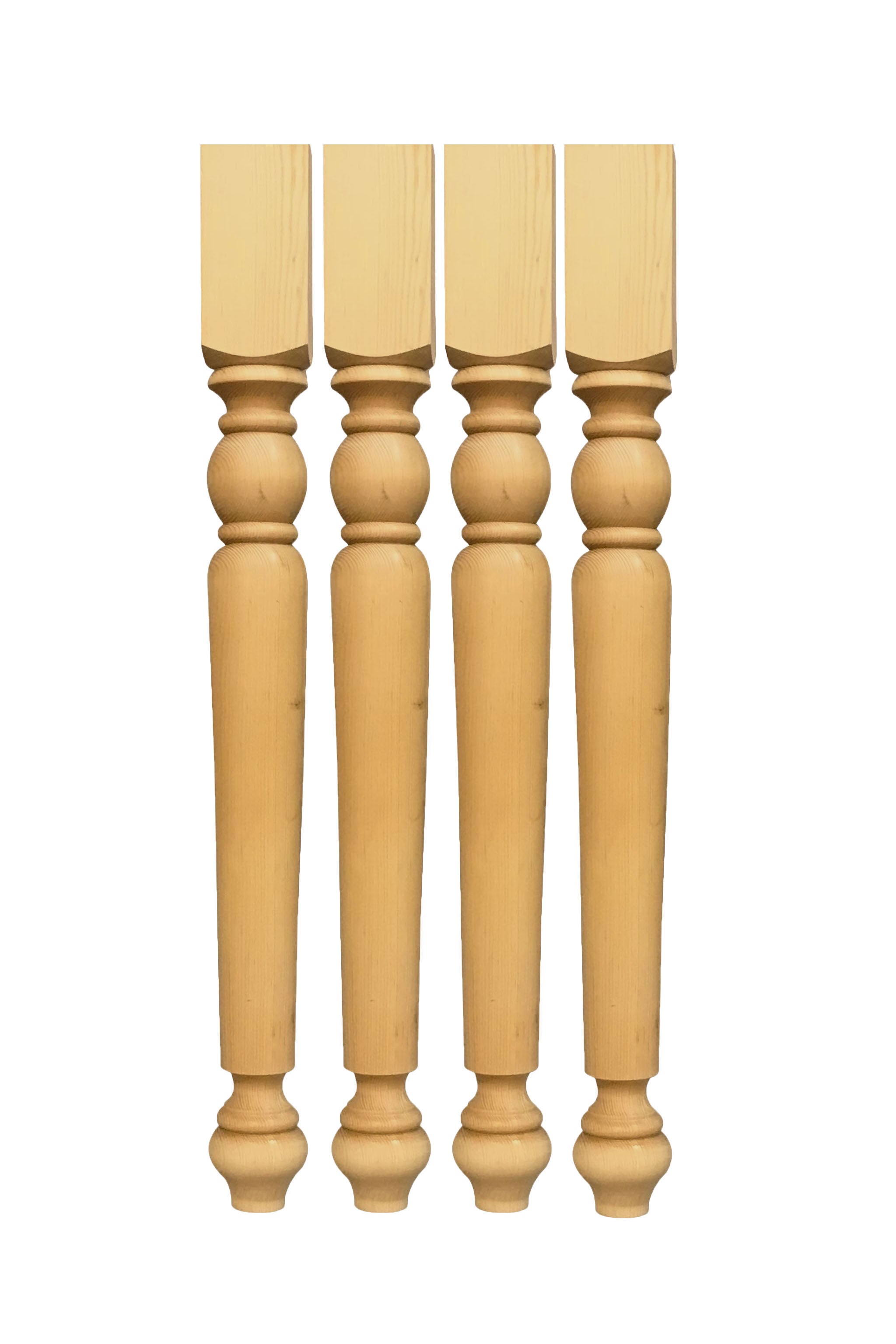What to Take Into Consideration When Choosing Table Legs Wood for Your Home.
When selecting wood for eating table legs, numerous important elements necessitate careful factor to consider to ensure both capability and aesthetic charm. The kind of wood selected can significantly influence the table's longevity, stability, and general design, while the maintenance demands might affect long-lasting use. Additionally, the interplay of grain patterns and shade with existing home furnishings can develop a natural design. Comprehending these aspects is essential, yet numerous ignore the essential aspect of monetary restrictions. As we discover these factors to consider further, the ramifications of your options might disclose unanticipated challenges and opportunities.

Significance of Timber Type
When choosing dining table legs, the choice of wood type plays a crucial role in determining both visual appeals and resilience. Different wood varieties supply differing degrees of resistance, weight, and toughness to use, which can considerably impact the functionality and long life of the table.
Alternatively, softer timbers like yearn or poplar, while more cost-efficient, might not use the same degree of toughness and may require even more regular maintenance or substitute. The wood type likewise affects the table's capacity to endure ecological variables such as humidity and temperature fluctuations. Additionally, the choice of wood can influence the convenience of completing and staining, which can be essential for achieving the desired look.
Visual Considerations
The aesthetic charm of eating table legs substantially contributes to the total aesthetic of the eating space. Dining Table Legs Wood. When choosing wood for eating table legs, the grain color, coating, and pattern are critical aspects that can take away or enhance from the area's style. Different wood kinds exhibit varying appearances and tones; as an example, oak presents a timeless appearance with famous grain, while walnut offers a rich, dark style
Additionally, the form of the legs plays an important function in specifying the table's personality. Smooth, minimalist legs can produce a contemporary feeling, while a lot more elaborate, transformed legs stimulate typical beauty. The design of the legs ought to integrate with existing furniture and the total motif of the space, whether it be rustic, contemporary, or transitional.
It is likewise essential to think about exactly how the legs communicate with other furnishings items, consisting of sideboards and chairs. A natural style not only raises the eating experience however also adds to the home's overall visual coherence. Inevitably, the option of table legs must be a thoughtful choice that reflects individual taste while making certain visual consistency within the area.

Resilience and Stability
Sturdiness and security are crucial factors in the option of table legs, as they directly influence the long life and safety of the furniture. When choosing timber for dining table legs, one must think about the integral residential or commercial properties of numerous timber types. Woods, such as oak, maple, and cherry, are frequently preferred for their strength and resistance to use, making them suitable for high-traffic dining areas.
Along with the kind of timber, the building and construction method additionally plays a significant duty in the this post total security of the table. Legs that are sturdily built, either via conventional joinery strategies or contemporary engineering techniques, will supply superior support and avoid tottering. It is necessary to assess the density and layout of the legs; thicker legs are normally extra steady and can stand up to greater weight.
Furthermore, the environmental conditions in which the eating table will be used can affect toughness. Timber that has been correctly treated for moisture resistance will certainly carry out better in humid settings. Inevitably, selecting the appropriate combination of sturdy timber and steady building will certainly make certain that your table stays a useful and secure centerpiece in your home for many years to come.
Upkeep Needs
Picking table legs made from long lasting wood is simply the beginning; understanding upkeep requirements is similarly essential to protect their appearance and functionality. Various wood kinds need differing degrees of care, so it is necessary to recognize what is required for your details selection.
Normal cleansing is fundamental; make use of a soft, wet towel to get rid of dust and debris. Stay clear of rough chemicals that can damage the finish. For timber surfaces like varnish or lacquer, regular brightening with furnishings wax can enhance luster and give a safety layer versus scratches.
Preventative steps are vital also. Use coasters and placemats to avoid straight call with hot or damp items, which can warp or discolor the timber. Furthermore, take into consideration putting really felt pads under the legs to avoid scrapes on your floor covering and lower use on the timber
Humidity control is an additional considerable element; maintaining a secure environment aids to stop bending and cracking. If your eating location is susceptible to changes in temperature level and moisture, consider making use of a humidifier or dehumidifier as necessary.
Budget and Price Factors
When intending to acquire eating table legs, comprehending spending plan and expense aspects is vital to make an informed decision. The sort of timber picked for the legs dramatically affects the general cost. Woods, such as oak or walnut, often tend to be a lot more costly than softwoods like ache, because of their toughness, aesthetic charm, and deficiency. Additionally, consider whether you are deciding or acquiring pre-made legs for custom layouts, as modification usually sustains higher expenses.
Labor and craftsmanship likewise play a critical function in the total expense. Handmade or artisan-crafted legs may lug a costs cost tag, reflecting the ability and time invested in their production. It's vital to evaluate the equilibrium between quality and price; investing much more upfront can cause a longer-lasting product that requires much less maintenance in time.
Conclusion
In recap, selecting the suitable timber for eating table legs demands mindful consideration of various factors, consisting of wood kind, aesthetic charm, maintenance, spending plan, and sturdiness restrictions. The option of hardwoods such as oak and maple can improve both stamina and aesthetic allure, while softer timbers may be much more look at here cost-effective but less long-lasting. Eventually, a well-informed choice relating to material choice will contribute to the total functionality and longevity of the table, making sure an important investment for the home.
When picking wood for eating table legs, a number of vital variables call for careful factor to consider to guarantee both capability and aesthetic allure.When choosing eating table legs, the selection of wood kind plays a crucial duty in figuring out both appearances and resilience. When picking wood for eating this link table legs, the grain coating, pattern, and color are pivotal components that can detract or improve from the area's layout. When choosing wood for eating table legs, one should take into consideration the inherent residential or commercial properties of numerous timber types.In summary, selecting the suitable timber for eating table legs requires cautious factor to consider of different factors, including wood type, aesthetic charm, spending plan, maintenance, and toughness restraints.